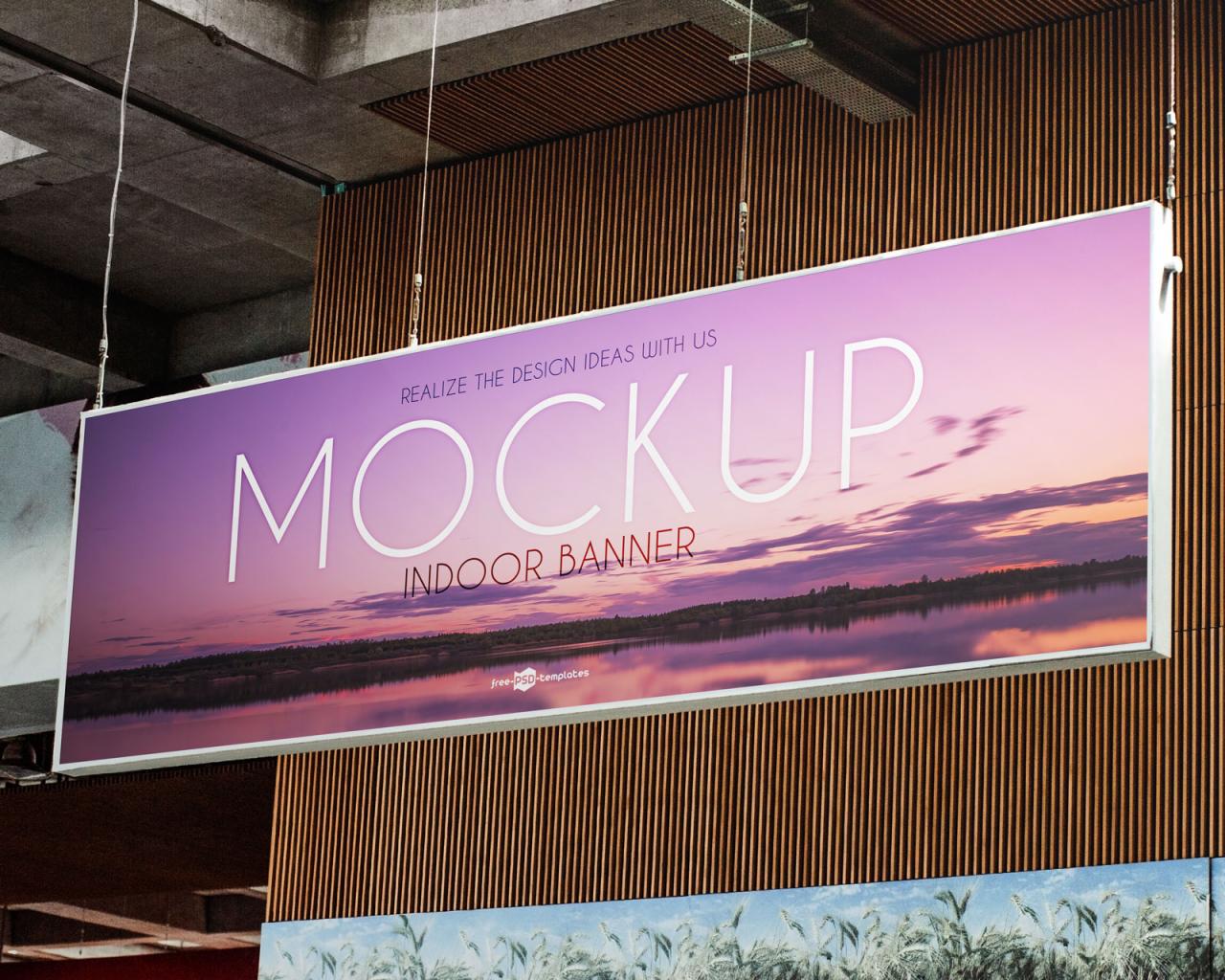
Banner Ad Mockup: A Comprehensive Guide to Captivating Digital Advertising
In the realm of digital marketing, banner ads reign supreme as ubiquitous and impactful advertising tools. They grace the margins of websites, social media feeds, and mobile applications, commanding attention and driving conversions. To maximize the effectiveness of these visual powerhouses, banner ad mockups emerge as indispensable assets for designers and marketers alike.
What is a Banner Ad Mockup?
Simply put, a banner ad mockup is a pre-designed template that showcases how a banner ad will appear in its intended environment. It provides a realistic preview of the ad’s placement, dimensions, and design elements, enabling designers to visualize and refine their creative vision before committing to production.
Types of Banner Ads
The vast world of banner ads encompasses a diverse array of formats, each tailored to specific platforms and objectives:
- Standard Banner Ads: These rectangular behemoths dominate website margins, grabbing attention with their unmissable presence.
- Leaderboard Ads: Perched atop web pages, these horizontal strips command a prime spot for high-impact branding.
- Skyscraper Ads: Towering vertically alongside the page, these slender rectangles offer ample space for detailed messaging.
- Half-Page Ads: Occupying half the screen’s real estate, these sizable units deliver maximum impact.
- Square Ads: These compact, attention-grabbing squares are ideal for social media platforms and mobile devices.
Essential Elements of a Banner Ad
Crafting an effective banner ad mockup demands meticulous attention to design elements that captivate the audience:
- Headline: A concise, compelling hook that entices viewers to engage with the ad.
- Body Copy: Succinct yet persuasive text that expands on the headline and drives action.
- Call-to-Action (CTA): A clear and compelling imperative that guides viewers to the desired response, such as visiting a website or making a purchase.
- Visuals: Eye-catching images, videos, or animations that enhance the ad’s appeal and amplify its message.
- Branding: Prominent display of the brand’s logo and visual identity to foster recognition and trust.
Benefits of Using a Banner Ad Mockup
Harnessing the power of banner ad mockups empowers designers and marketers with a myriad of advantages:
- Visualization and Refinement: Mockups allow designers to preview their creations in real-world scenarios, facilitating iterative refinement and ensuring optimal impact.
- Time-Saving: Using pre-designed templates significantly reduces design time, allowing teams to focus on creative ideation and content strategy.
- Consistency: Mockups ensure consistency across multiple banner formats and platforms, maintaining brand identity and message integrity.
- Enhanced Collaboration: Mockups facilitate seamless collaboration between designers, marketers, and stakeholders, fostering alignment and reducing miscommunication.
- Increased Conversions: By optimizing ad design and ensuring seamless user experience, mockups contribute directly to improved conversion rates.
How to Create a Banner Ad Mockup
Creating a compelling banner ad mockup involves a straightforward process:
- Choose a Mockup Template: Select a template that aligns with the desired banner format and platform.
- Import Your Design: Upload the banner ad design into the mockup template, ensuring it adheres to size guidelines.
- Customize the Mockup: Fine-tune the mockup by adjusting colors, fonts, and other design elements to match the brand’s aesthetic and messaging.
- Preview and Export: Preview the mockup to ensure it meets expectations, then export the finalized version in the desired file format.
Best Practices for Banner Ad Mockup Design
To maximize the impact of banner ad mockups, designers should adhere to proven best practices:
- Keep it Simple: Avoid clutter and focus on conveying the essential message clearly and concisely.
- Use High-Quality Visuals: Leverage visually appealing images, videos, or animations to capture attention.
- Optimize for Different Platforms: Tailor mockups to the specific dimensions and requirements of each platform.
- Consider the User Experience: Ensure the ad design is responsive and user-friendly, enhancing the viewer’s experience.
- Test and Iterate: Use A/B testing to evaluate different mockups and gather data-driven insights for continuous improvement.
Conclusion
Banner ad mockups stand as indispensable tools in the digital marketing arsenal, empowering designers and marketers to craft visually captivating ads that drive engagement and conversions. By understanding the types, essential elements, and benefits of mockups, and adhering to best practices, advertisers can harness their full potential and achieve maximum impact in their digital advertising campaigns.
Frequently Asked Questions (FAQs)
Q1: What software can I use to create banner ad mockups?
- Adobe Photoshop
- Canva
- GIMP
- Sketch
Q2: Where can I find free banner ad mockup templates?
- Freepik
- Pixeden
- Mockupworld
- PSD Repo
Q3: What are the recommended dimensions for banner ads?
- Standard Banner Ads: 468×60 pixels
- Leaderboard Ads: 728×90 pixels
- Skyscraper Ads: 160×600 pixels
- Half-Page Ads: 300×600 pixels
- Square Ads: 250×250 pixels
Q4: How often should I update my banner ad mockups?
- Regularly, to reflect changes in branding, messaging, or creative ideas.
- As new platforms or ad formats emerge.
Q5: How can I track the performance of my banner ads?
- Use analytics tools provided by advertising platforms.
- Track key metrics such as click-through rate (CTR), conversion rate, and impressions.





